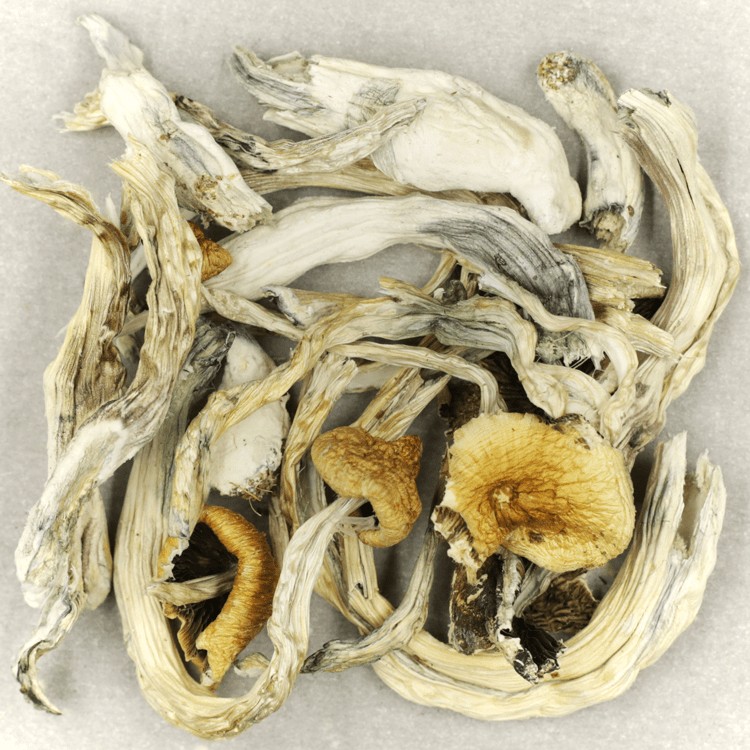The Treasure Coast Mushroom strain of magic mushrooms is lauded for its potential to boost creative thinking and inspire innovative insights.
A common problem among writers is creative block, a state in which developing or executing new ideas becomes a challenge.
Occasionally, this block arises from psychological factors such as fear of criticism, the pursuit of perfection, or external pressures. While numerous techniques exist to navigate these obstacles, for some, shrooms may present a faster, more powerful conduit to inventive thoughts.

Key Takeaways:
- Treasure Coast mushrooms stimulate creativity by promoting divergent thinking.
- Due to their high psilocybin content, these mushrooms temporarily disrupt the brain’s default mode network, enhancing spontaneous idea generation and introspection.
- Even a week after psilocybin ingestion, the substance can enhance creativity by aiding in the formation of new concepts.
Getting to Know Treasure Coast Mushrooms:
Known scientifically as Psilocybe cubensis, these mushrooms originate from the Treasure Coast area of Florida, hence their name. They are recognized for their swift growth.
- These mushrooms sport a unique caramel to golden brown cap that can expand up to 5 centimetres in diameter.
- The cap, with its wavy edges, bears resemblance to a small sombrero.
- Underneath the cap is a dense layer of gills, varying in hue from light yellow to a darker brown.
- Upon reaching maturity, it leaves behind a purple-black spore print.
- The sturdy stem, which ranges from 5 to 15 centimetres in height, frequently turns blue when touched. This is not merely an aesthetic feature; it’s a chemical reaction that signifies the presence of psilocin, a potent psychoactive compound that affects the brain.
Note: Pale variants, referred to as leucistic strains, can occur. These resemble the original strain closely, visible once the strain is identified.
Effectiveness and Impact
While it may not rival the intensity of strains like Penis Envy, it can still offer an extraordinary psychedelic experience. Users have reported typical psilocybin effects such as mood changes, heightened senses, and insightful revelations.
Brief Historical Context in Cultural Environments
Historically, the use of mushrooms dates back to ancient civilizations, with evidence of their use in religious and healing rituals in areas ranging from Mesoamerica to present-day Canada.
These enigmatic fungi were used in native community ceremonies to foster deep connections with the spiritual realm, capitalizing on their visionary properties for healing and community bonding.
Scientific Analysis of Psilocybin’s Effect on Creativity
A recent study showcased in the Journal of Transnational Psychiatry utilized ultrahigh-field multimodal brain imaging to track these effects as they occurred. The study determined that psilocybin increased the connectivity within and among various brain networks, leading to an upswing in “spontaneous” creativity.
Altering Perception and Cognitive Skills
After intake, psilocybin reaches peak levels in the bloodstream (15.61 ng/mL) approximately 80 minutes later, causing reported shifts in sensory perception and cognitive capabilities.
- Colors seem more vivid
- Objects appear to pulsate or alter
- Spatial awareness changes are likely
An increase in glutamate concentrations was observed in the medial prefrontal cortex, a region connected with complex thought and decision-making processes. In contrast, glutamate levels decreased in the hippocampus, a region linked to memory.
Research Conclusions
Does psilocybin truly boost creativity, or is it merely Does this affect perception? A study in the Journal of Transnational Psychiatry explored this question by examining “spontaneous” and “deliberate” creativity.
Spontaneous creativity refers to unanticipated, raw ideas that suddenly emerge in one’s mind, while deliberate creativity involves focused problem-solving and task-oriented thinking. Researchers have noted that spontaneous thought processes are amplified, while deliberate ones are temporarily obstructed.
- Participants’ originality was evaluated through tasks such as the Picture Concept Task (PCT) and the Alternative Uses Task (AUT), yielding extremely reliable scores of 0.95 and 0.91 respectively.
- After consuming the substance, participants reported a rise in feelings of insightfulness, suggesting a heightened connection to new ideas.
- The participants’ task-focused thoughts decreased, potentially due to the brain’s newly formed, less restricted connections overshadowing the structured, sequential problem-solving process.
- Participants exhibited an elevated generation of unique ideas one week post-exposure, implying that the brain’s reformation could have a long-lasting effect, augmenting originality even after the period of ingestion.
Divergent Thinking and Problem Solving
Divergent thinking, the capacity to conceive multiple solutions for a single problem, is a vital trait of creativity. By breaking down conventional thought barriers, the compound allows the brain to consider perspectives that might typically be disregarded as irrational or improbable.
Psychedelic substances that have sufficient milligrams to induce hallucinations target the serotonin 5-HT2A receptors in the brain, disrupting regular thought processes and fostering cognitive flexibility and divergent thinking. This procedure could establish a route to unlocking creativity.
Recommendations for Writers Experimenting with Treasure Coast Mushrooms
Feeling like you’re stuck in a creative dead end? Contemplate the potential creativity enhancement that mushrooms could provide. For novices, it’s recommended to start with minimal doses to safely experience the creativity-boosting effects of this fascinating substance.
Dosing Recommendations for Creative Ventures
| Microdose (0.1 – 0.3 grams) | This dosage won’t produce visual effects, but it can enhance focus, mood, and creativity without disrupting your daily activities. |
| Low Dose (0.5 – 1 gram) | This dosage may boost and mood, while also leading to slight distortions. |
| Moderate Dose (1 – 2 grams) | At this dosage level, expect to experience more noticeable effects, such as visual distortions, an increased feeling of interconnectedness, and heightened emotional responses. |
Understanding the Importance of “Set” and “Setting”
- Set: Before you start, take some time to define your intentions. Are you hoping to generate new ideas? Delve into your personality. Approach the session with an open mindset, prepared for possible psychological exploration.
- Setting: The perfect place is one that is comfortable and familiar. Think about a peaceful room, perhaps with elements that enhance the atmosphere, like dim lighting, calming instrumental music, and a notepad within arm’s reach. If possible, let a trusted friend know about your session or ask them to be there as a sober, supportive “trip-sitter”, just in case.
Techniques to Try While Under the Influence
Freeform Thought Writing
Psilocybin tends to decrease one’s usual inhibitions and promotes a stream of consciousness. This includes writing down whatever comes to mind without self-judgment, analysis, or worrying about its logical flow.
Continuous Association
An interesting experiment involves writing down words as they come to you, even if they seem unrelated. This can potentially connect separate thoughts, so jot down any words that pop up, follow the thought trail wherever it goes, and see if you can discover new themes or patterns for your work.
Interacting with Characters
If you’re writing fiction, consider initiating a direct conversation with your characters. This can blur the line between creator and creation, enabling you to dive into different viewpoints. Ask questions like, “What do you want to do next?” or “What frightens you?” Capture their “responses” as they come to you.
Wrapping Up Your Visionary Journey
Being a member of the Psilocybe cubensis family, Treasure Coast has properties that are favorable to the creative process, fostering increased introspection, sensory perception, and openness.
To writers, this isn’t
Creativity is not confined to fleeting inspiration; it entails the use of a tool that can surmount creative blocks, amplify sensory details, and promote distinctive forms of expression. Remember, psilocybin, which can be procured from a shroom online, is an enhancer, not a substitute for talent or hard work.
Frequently Asked Questions
How should one reflect upon and incorporate the psilocybin experience?
After the session, it’s crucial for writers to scrutinize their notes or recorded reflections and pinpoint any recurring themes, symbols, or emotions that connect with their work. Keeping a “journey journal” and summarizing emerging ideas or emotional shifts can facilitate them in comprehending their experience.
How long do the creative effects of Treasure Coast mushrooms last?
The effects last for 4-6 hours, but the boost in creativity can extend for several days. Heightened creativity, particularly in creating new ideas, can persist even a week after the session. This phase of “afterglow,” characterized by increased open-mindedness and cognitive flexibility, is an ideal time to hone or broaden the ideas generated during the experience.
Are there any prominent writers or artists who have used psychedelics for creative inspiration?
The author Aldous Huxley experimented with mescaline and later LSD, recording his experiences in The Doors of Perception. Counter-cultural authors like Allen Ginsberg and Jack Kerouac are also famous for their psychedelic usage, as are musicians such as The Beatles.
Despite the fact that they didn’t specifically use Treasure Coast, their work stands as a testament to the longstanding connection between psychedelics and creativity across the spheres of art and literature.





